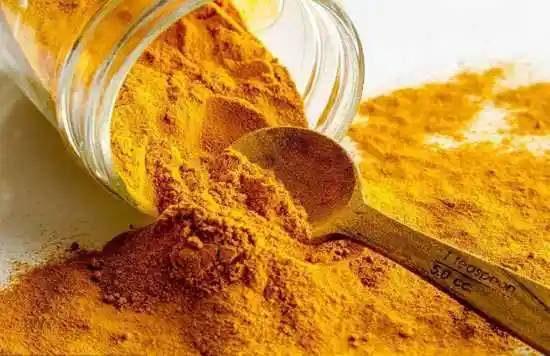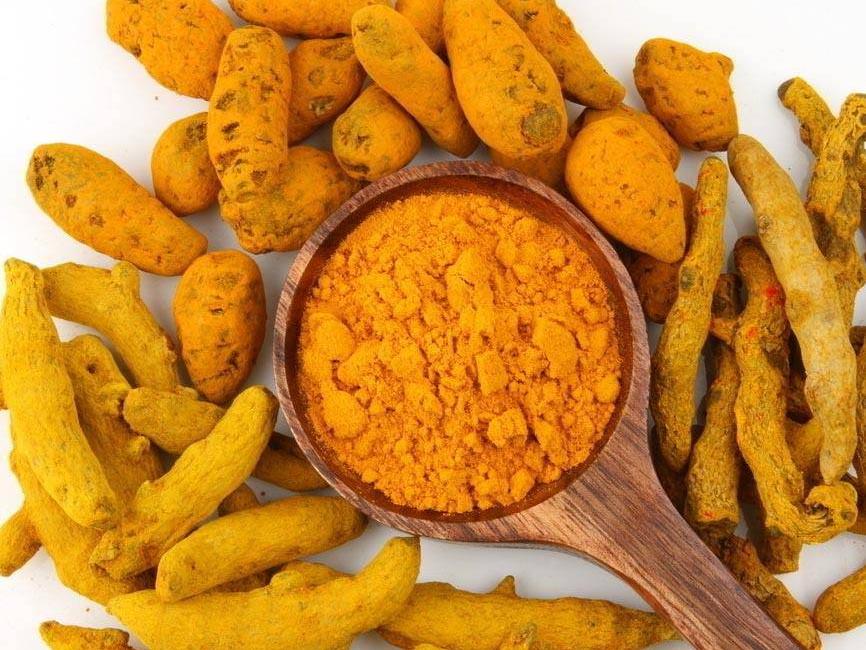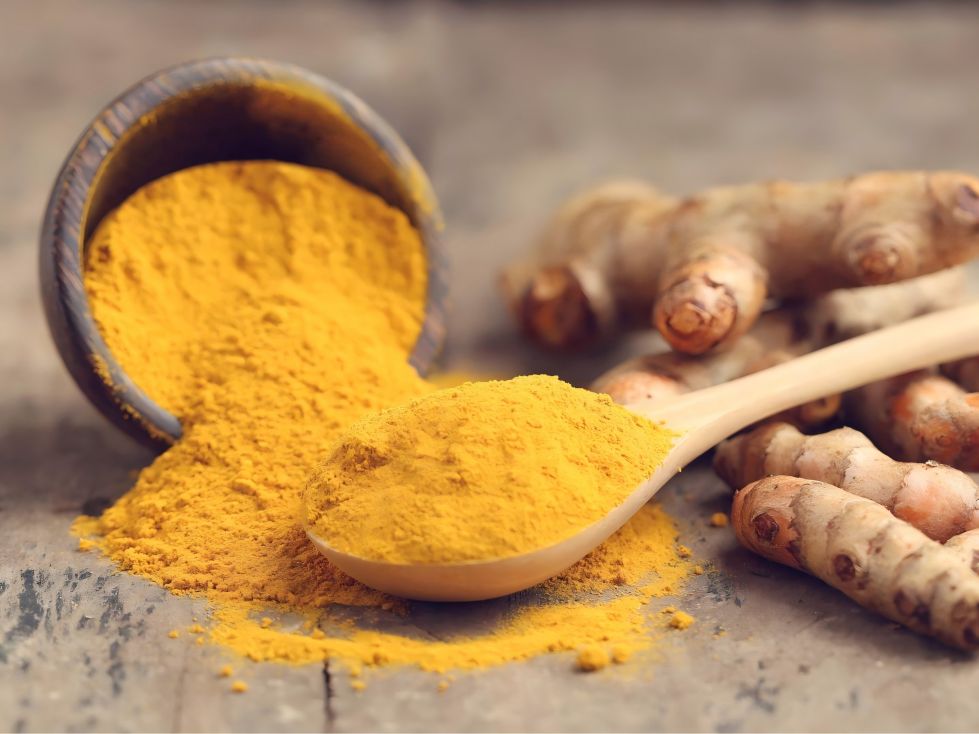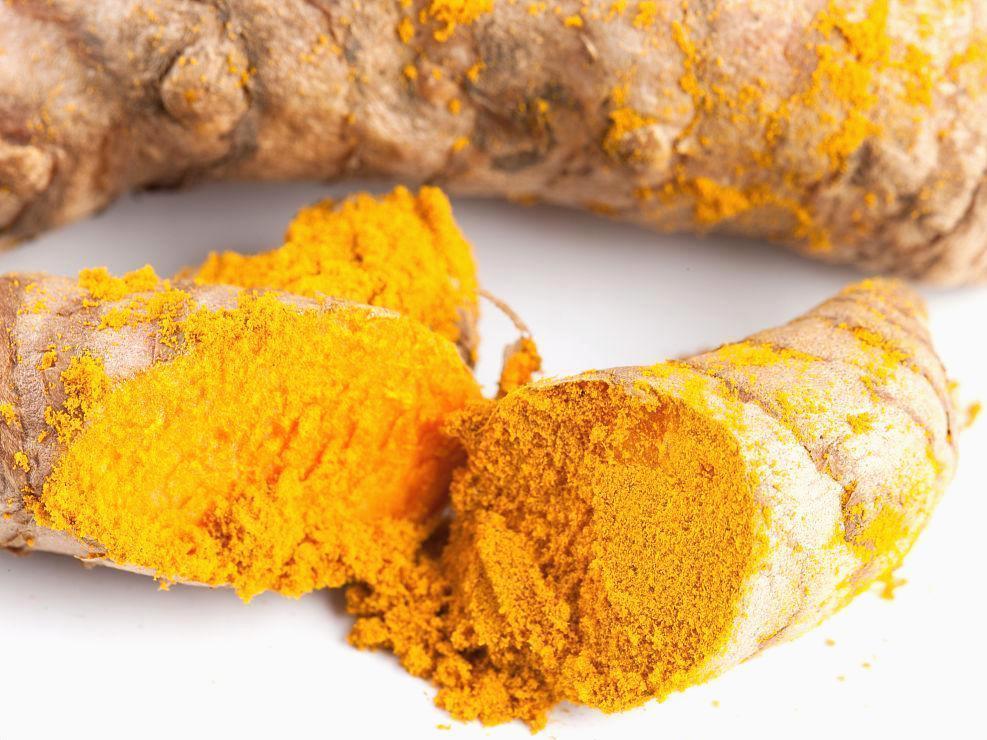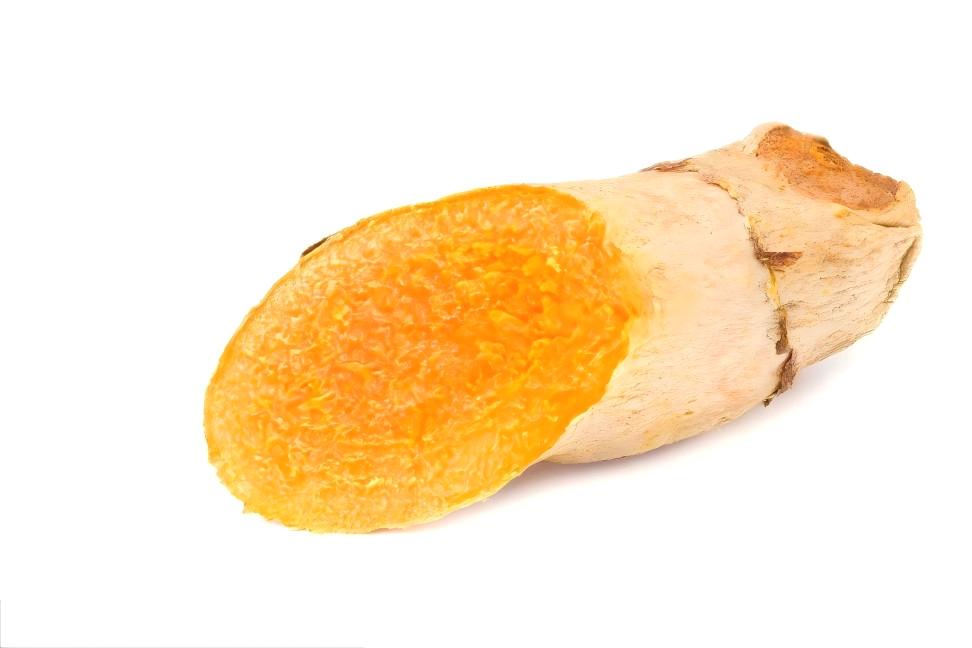Study on Curcumin Antioxidant
1 Introduction
Curcumin is a natural yellow pigment extracted from the rhizomes of turmeric and other plants in the ginger family. It is also found in other plants in the ginger family. Curcumin is a polyphenolic compound [1] with the chemical formula C21H20O6. It is an orange-yellow crystalline powder with a slightly bitter taste. It is insoluble in water and comes in many varieties. It is currently one of the most widely used natural active ingredients [2]. In recent years, studies have found that curcumin has pharmacological effects such as anti-cancer [3], treating arthritis [4], delaying Alzheimer's disease [5], and lowering blood lipids [6], and is widely used in clinical applications.
In the current fast-paced life, with the increase in the pressure of people's daily lives, coupled with the current food safety situation in China, which is not optimistic, more and more people are experiencing physical problems to varying degrees. This article aims to promote the research, development and utilization of curcumin by organizing and explaining the function and pharmacological effects of curcumin in the human body.
2 Physiological functions
2.1 Antioxidant effect
Numerous medical studies and clinical trials have proven that the root cause of human illness is the electronic robbery of human cells. Free radicals ROS, as unsaturated electron substances, enter the human body and compete for electrons, and also directly attack DNA, cell membranes and proteins, thereby causing a variety of diseases. Curcumin can directly remove free radicals, thereby achieving an antioxidant effect.
Song Limin et al. [7] found that the polyphenols in curcumin, as natural antioxidants, have different degrees of reducing power and have a very significant therapeutic effect on diseases caused by free radicals. Li Guanghui et al. [8] showed that curcumin can increase the activity of antioxidant enzymes and improve antioxidant properties. In addition, Liu Feng [9] showed in his research that curcumin can enhance the antioxidant capacity of rat heart muscle cells, thereby producing a mechanism that can protect heart muscle cells from damage. In a study by Zhiqiao [10], it was found that curcumin, as a strong antioxidant, can relieve the damage caused to the human body by free radicals and protect the human joints and brain. This shows that curcumin can be used as an antioxidant to block free radicals from harming the body, thereby reducing the risk of disease and delaying the damage caused to the body.
2.2 Repairing brain damage
The brain, as the highest part of the nervous system, plays a vital role in humans. When our brain is hit or violently impacted from the outside, it can cause direct or indirect trauma to the brain. In addition, brain cells can also be damaged irreversibly when they develop lesions, resulting in high mortality and morbidity rates [11]. Curcumin, as a protective substance for neurons, can effectively reduce and repair brain damage.
In studies by Li Jie [12] and others, it was also pointed out that curcumin can effectively reduce brain damage and improve motor function, as well as exert neuroprotective and neurotrophic effects. In addition, Liang Lan [13] and others investigated the protective effect of curcumin on traumatic brain injury. The study showed that curcumin can play a certain protective role in traumatic brain injury. Dai·W et al. [14] found in their study that curcumin can enhance the transport of transcription factors from the cytoplasm to the nucleus, and concluded that curcumin can increase the activity of antioxidant enzymes, thereby reducing brain damage. After a period of cerebral ischemia, the reflow of blood not only fails to restore the tissue and function of the brain, but can also cause more serious, irreversible damage. Several studies have found that curcumin has a significant repair effect on reducing ischemic reperfusion brain damage [15-17].
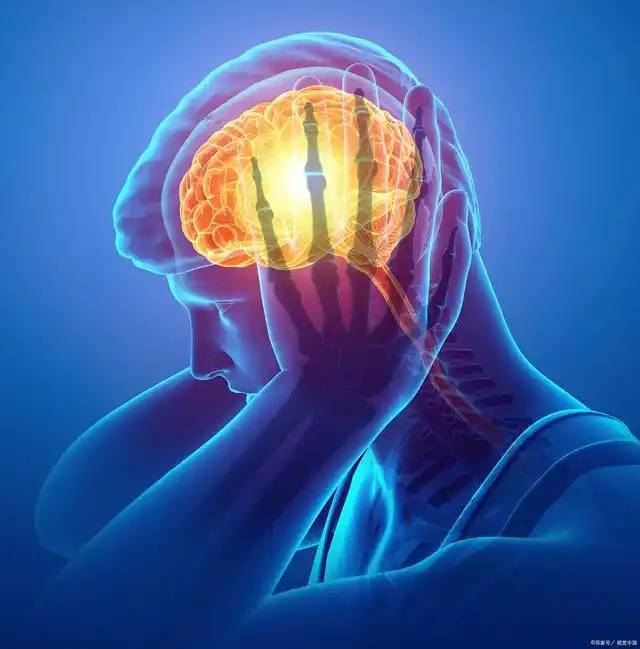
In the treatment of chronic ischemic brain damage, Yang et al. [18] found that curcumin can effectively reduce apoptosis of brain cells and has a significant protective effect on the nerves of brain damage induced by chronic cerebral ischemia. Hypoxic brain damage is also very common in clinical practice and is a type of brain damage with extremely high disability and mortality rates [19]. Yin Guangmei et al. [20] conducted a series of studies on the effects of changes in brain tissue and apoptosis during cerebral ischemia-reperfusion injury, and demonstrated that curcumin can reduce the effects of ischemia-reperfusion on brain injury. This shows that curcumin can effectively repair brain trauma and damage caused by cell damage.
2.3 Improves Alzheimer's disease
Alzheimer's disease patients have a lot of amyloid protein deposited outside the nerve cells of the brain. Curcumin can dissolve these proteins and prevent their regeneration, thereby improving the effect of Alzheimer's disease. Chen Hanzhe et al. [21] found that the expression and activity of tissue protease in mononuclear cells of the peripheral blood of rats treated with curcumin were both on the rise. Curcumin can help improve learning ability and memory, and can improve spatial learning and memory disorders. Multiple studies have shown that curcumin can significantly reduce apoptosis in the hippocampus, thereby improving learning and memory disorders caused by Alzheimer's disease [22-24]. This shows that curcumin can effectively delay Alzheimer's disease and improve symptoms such as memory impairment, executive dysfunction, personality and behavior changes caused by Alzheimer's disease.
Curry is very rich in curcumin. Studies have found [25, 26] that curcumin can break down amyloid protein in the brain and prevent the production of this protein. Eating more curry may help prevent Alzheimer's disease.
2.4 Anti-cancer effect
Cancer is one of the world's five major incurable diseases. It is similar to normal tissue and cannot be recognized and eliminated by the body's immune system. Among the various factors and types of death that cause death each year, cancer ranks first [27]. Curcumin can regulate gene activity and expression, inhibit the growth of cancer cells, and promote the function of healthy cells.
Liu Bin et al. [28] studied the mechanism of curcumin-induced apoptosis in human melanoma cells and concluded that curcumin not only effectively inhibits the proliferation of human melanoma cells, but also promotes their apoptosis, thus exerting a significant anti-cancer effect.
Shi Danli et al. [29] observed the effect of curcumin on the invasion ability of thyroid cancer cells and concluded that curcumin can effectively inhibit the proliferation and migration of thyroid cancer cells.
Pancreatic cancer is a malignant tumor of the digestive tract that is difficult to diagnose and treat, and has a high degree of malignancy. It has the fourth highest mortality rate among malignant tumors [30]. Song Wei et al. [31] concluded from their study of the inhibitory effect of curcumin on the proliferation of human pancreatic cancer cells and its influence on signal pathways that curcumin can effectively inhibit the expression of pancreatic cancer cells and the activation of signal pathways, thereby inhibiting cancer cell proliferation and differentiation.
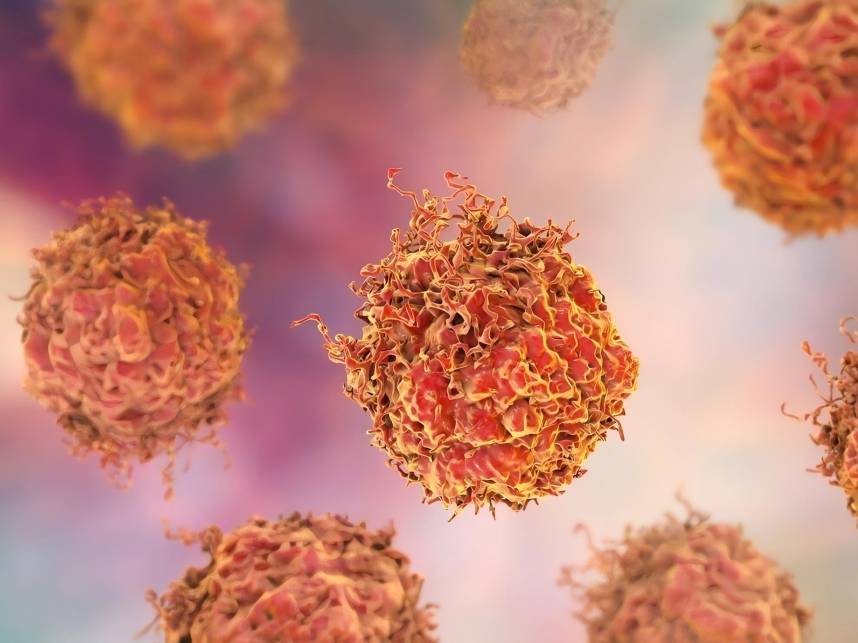
Primary liver cancer is also a malignant cancer with high severity and easy metastasis. Its early symptoms are not obvious, and it is often not discovered until the middle or late stages, with a high mortality rate [32, 33]. Li Shengxi et al. [34] concluded that curcumin can effectively inhibit the growth and proliferation of liver cancer cells through the effect of curcumin on the anti-cancer effect of liver cancer cells. 80% of lung cancer patients have non-small cell lung cancer, and most are diagnosed at an advanced stage [35]. Studies have found[36] that curcumin can cause non-small cell carcinoma to undergo mitochondrial autophagy, thereby inhibiting its cancer cell proliferation.
Esophageal cancer is a common malignant tumor of the digestive system, and its incidence ranks sixth among malignant tumors worldwide. The five-year survival rate of patients is low[37], and the exact pathogenesis is still unclear. Li Mingjie [38] studied the effects of curcumin on the proliferation, apoptosis, and gene expression of esophageal cancer EC-9706 cells, and concluded that curcumin can significantly induce apoptosis of these cancer cells. It can further be seen that curcumin can inhibit the proliferation of esophageal cancer, thereby achieving the effect of anti-esophageal cancer.
The above shows that curcumin has the effect of inhibiting the growth, proliferation and differentiation of cancer cells, inducing apoptosis of cancer cells, inhibiting their migration and gene activity expression, etc., and can be further studied as an effective anti-cancer drug.
3 Summary and outlook
Curcumin has few toxic side effects, diverse and powerful functions, and is widely used in medicine. Therefore, curcumin has broad prospects for future application. However, curcumin is insoluble in water and is easily oxidized in vitro, which also greatly hinders its application. In the future, the main research topic for clinicians and researchers will be how to improve curcumin's shortcomings in a form or with a carrier that can overcome these shortcomings. Curcumin still has great market potential waiting to be discovered.
Reference:
[1] MURRAYSTEWART T ,CASERO R A. Regulation of polyamine me- tabolism by curcumin for cancer prevention and therapy[J].Medical Sci- ences,2017,5(4):38.
[2] Liu Shuwei, Deng Yueyi. Research progress of solid dispersions of curcumin [J]. Modern Medicine and Health, 2018, 34 (9): 71-74.
[3] VALLIANOU N G ,EVANGELOPOULOS A,SCHIZAS N,et al. Po- tential anticancer properties and mechanisms of action of curcum in[J]. Anticancer Research,2015,35(2):645.
[4] HENROTIN Y,PRIEM F,MOBASHERI A. Curcumin:anew paradigm and therapeutic opportunity for the treatment of osteoarthritis:curcumin for osteoarthritis management[J].Springerplus,2013,2(1):1-9.
[5] NATASCIA B,SIMONA R,ANNALISA B,et al. Curcumin as ather- apeutic agent in dementia:a mini systematic review of human studies[J]. The Scientific World Journal,2014,2014:1-6.
[6] HOANG M H,KIM J Y,LEE J H,et al. Antioxidative,hypolipidemic, and anti-inflammatory activities of sulfated polysaccharides from Mono- stromanitidum[J].Food Science and Biotechnology,2015,24(1):199- 205.
[7] Song Limin, Zhang Di, Zhang Jie, et al. In vitro antioxidant activity of curcumin compounds and their structure-activity relationship [J]. Journal of Yantai University (Natural Science and Engineering Edition), 2018, 31, 113 (2): 30-35.
[8] Li Guanghui, Zhong Xiuling, Aamir Nawab, et al. Effects of curcumin on the antioxidant properties of the blood and tissues of Roman chickens [J]. Anhui Agricultural Science, 2018, 46(21): 96-99.
[9] Liu F. Effects of curcumin on myocardial antioxidant, glucose metabolism and apoptosis in rats with exhaustive exercise [J]. Journal of Yangzhou University (Agricultural and Life Sciences Edition), 2017(2): 44-50.
[10] Zhiqiao Zhi. Curcumin: a new option for brain health and joint health [N]. China Food News, 2015-12-07 (006).
[11] Dong W,Yang B,Wang L,et al. Curcumin plays neuroprotective roles against traumatic brain injury partly via Nrf2 signaling[J].Toxicology and Applied Pharmacology,2018,346:28-36.
[12] Li J, Li Z, Cheng T. Experimental study on curcumin for the treatment of traumatic brain injury in young mice [J]. Chinese Journal of Practical Neurology, 2017 (22): 1-4.
[13] Liang Lan, Wei Huiping, Sun Yan, et al. Anti-oxidative stress effect of curcumin in a rat model of traumatic brain injury [J]. Chinese Journal of Comparative Medicine, 2018, 28(4): 73-80, 92.
[14] Dai W,Wang H,Fang J,et al. Curcumin provides neuroprotection in models of traumatic brain injury via theNrf2-ARE signaling pathway [J]. Brain Res Bull,2018,140:65-71.
[15] Zhao Jing, Yu Shanshan, Lin Xuemei, et al. Effects of curcumin on matrix metalloproteinases MMP-2 and MMP-9 after cerebral ischemia-reperfusion injury in rats [J]. Stroke and Neurological Diseases, 2010, 27(5): 392-394.
[16] Liu Li, Tan Botao, Li Yu, et al. Protective effect of curcumin on cerebral cortical ischemia-reperfusion injury in rats and its mechanism [J]. Chinese Journal of PLA, 2013, 38 (3): 190-194.
[17] Wang Nan, Chen Keyan, Guo Wanshu, et al. Effects of curcumin on hippocampal neuronal apoptosis and PI3K signal factor expression in rats with cerebral ischemia-reperfusion [J]. Advances in Anatomical Sciences, 2017 (1): 36- 39.
[18] Yang Liu, Zhang Min, He Xi, et al. Study on the protective effect and molecular mechanism of curcumin on chronic cerebral ischemia-induced brain damage in rats [J]. China Pharmaceutical Industry, 2015, 24 (4): 31-34.
[19] Zheng Yuanyuan, Yu Linsheng, Zhang Yihu, et al. Expression of c-fos in rats with hypoxic brain injury and the effect of curcumin [C]//. Zhejiang Annual Conference on Pathology, 2009.
[20] Yin Guangmei, Yu Linsheng, Wu Shuzhen, et al. Effects of curcumin on changes in MDA, expression of caspase-3 and apoptosis of brain tissue in rats with cerebral ischemia-reperfusion injury [J]. Chinese Journal of Applied Physiology, 2010 (4): 504-506.
[21] Chen Hanzhe, Li Jinwei, Shi Han, et al. Effect of curcumin on the expression of histone protease B in peripheral blood mononuclear cells of rats with Alzheimer's disease model [J]. Journal of Stroke and Cerebrovascular Diseases, 2018, 35(8): 726-729.
[22] Ye Maosheng, Pan Feng, Zhou Yong, et al. Intervention of curcumin on apoptosis of hippocampal CA1 region cells in rats with Alzheimer's disease model [J]. Journal of Medical Research, 2018, 47; No. 482 (2): 98-101, 112.
[23] Meng Fanchao, Wang Yunliang, Yin Honglei, et al. Effect of curcumin on the expression of glial fibrillary acidic protein in the hippocampus of rats with Alzheimer's disease induced by Aβ [J]. Chinese Journal of Gerontology, 32 (10): 2119-2121.
[24] Chen Xin. Effect of curcumin on learning and memory ability and hippocampal cells of mice with Alzheimer's disease [J]. Chinese Journal of Gerontology, 2016 (24): 6056-6058.
[25] Eating curry regularly can prevent Alzheimer's disease [J]. Today's Science Park, 2009 (13): 94-94.
[26] Study finds that eating more curry may help prevent Alzheimer's disease [J]. Chinese Journal of Food Science, 2016 (5): 24.
[27] Jiang Xianjie, Wang Jie, Deng Xiangying, et al. Immune checkpoint therapy: a revolutionary breakthrough in the fight against cancer – on the occasion of the announcement of the 2018 Nobel Prize in Physiology or Medicine [J]. Progress in Biochemistry and Biophysics, 2018, 45 (11): 1178-1186.
[28] Liu Bin, Deng Chenliang, Yang Songlin, et al. Curcumin's mechanism of apoptosis in human melanoma cells [J]. Chinese Journal of Cancer Prevention and Control, 2014, 21(14): 1059-1062.
[29] Shi Danli, Wang Hexian. Curcumin's effect on the proliferation and migration of thyroid cancer cells [J]. Hainan Medical Journal, 2013, 24(20): 2970-2972.
[30] Guan Hongrong, Li Nan, Shan Xinyu, et al. Expression and clinical significance of PAIP1 in pancreatic cancer tissue [J/OL]. Journal of Clinical and Experimental Pathology, 2018(11): 1185- 1188.
[31] Song Wei, Cui Yun, Zhang Jianbo, et al. Curcumin inhibits the proliferation of human pancreatic cancer cells and affects the Wnt signaling pathway [J]. World Traditional Chinese Medicine, 2018, 13(5): 202-204.
[32] Lu Yijie, Chen Jian, Lu Rongzhu, et al. Research progress on the mechanism of curcumin in the treatment of primary liver cancer [J]. Journal of Hepatobiliary and Pancreatic Surgery, 2016, 28(2): 166- 168.
[33] Zhang J. Nursing intervention of hepatic artery chemotherapy combined with microsphere embolization for primary liver cancer [J]. General Nursing, 2017, 15(36): 4549-4550.
[34] Li Shengxi, Zeng Bin, Shi Wei, et al. Anti-cancer effect of curcumin on liver cancer cells HepG2 and its influence on the expression of P21WAF1/CIP1 [J]. Advances in Modern Biomedicine, 2011, 11(14): 2658-2660.
[35] Dong Wenting, Chen Xian, Fan Yanni, et al. Analysis of characteristics and trend prediction of non-small cell lung cancer inpatient cases from 2005 to 2015 [J]. Chinese Medical Records, 2018, 19 (5): 50-53.
[36] Discussion on the mechanism of curcumin-induced apoptosis of NSCLC cells [J]. Chinese Journal of Cancer Prevention and Control, 2017 (10).
[37] Geng J, Li Y, Li J, et al. The inhibitory effect of siRNA interference with VRK1 expression on the protein expression, proliferation and migration of esophageal cancer cells BANF1 [J/OL]. Cancer Prevention and Research: 1-6.
[38] Li M. The effect of curcumin on human esophageal cancer EC-9706 cells [D]. Zhengzhou: Zhengzhou University, 2011.


 English
English French
French Spanish
Spanish Russian
Russian Korean
Korean Japanese
Japanese